Blog
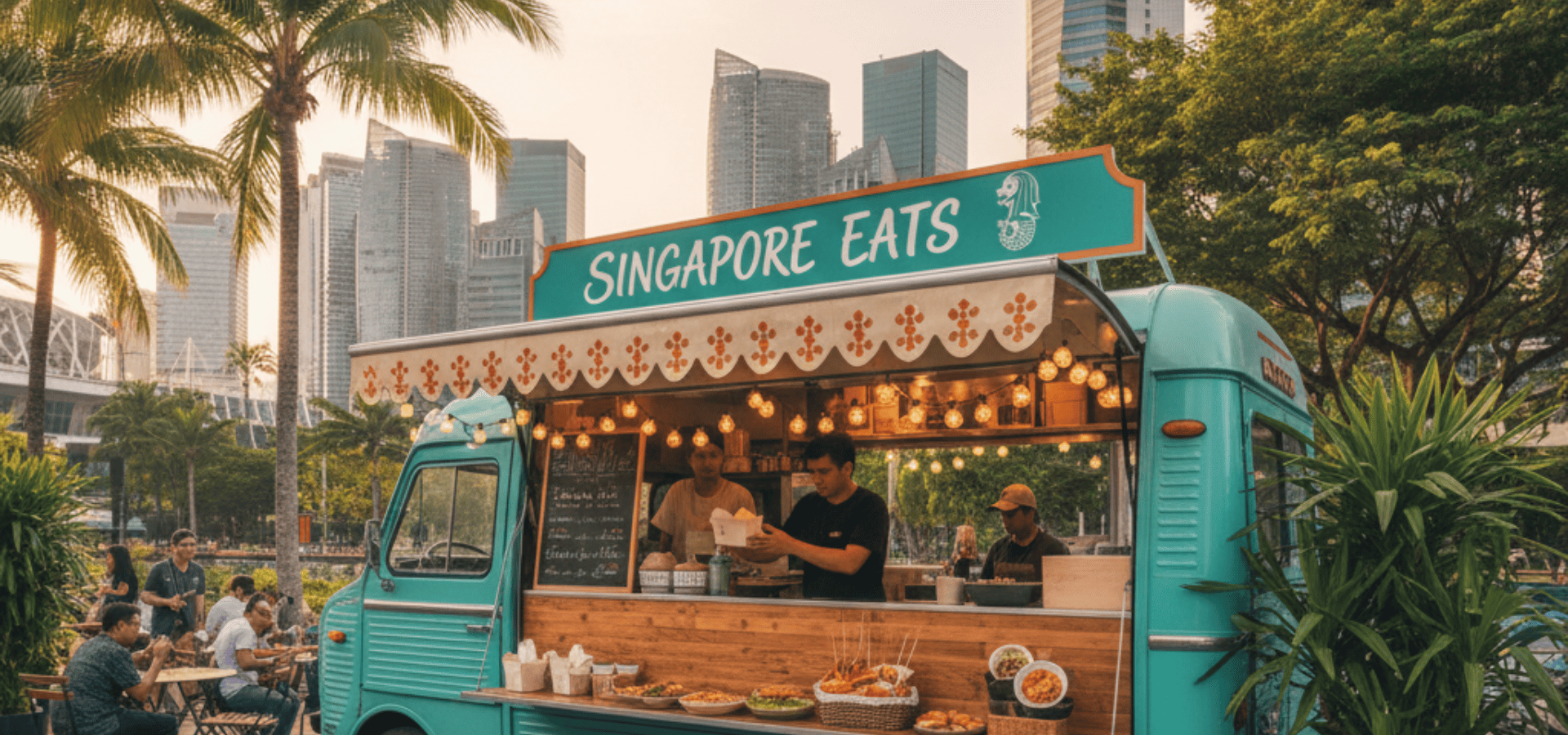
October 1, 2025
There’s nothing glamorous about sweating over a hot grill while the noonday sun bakes down on your metal roof. Ask anyone who’s worked a food truck in Singapore: shade and airflow are survival tools, not luxuries. That’s where awnings come in. They’re not just decorative frills for your wagon; they’re working gear, as essential as your gas tanks or your prep bench. In the mobile food world, space is money, and comfort is oxygen. The right awning can mean the difference between a queue that lingers and a customer who decides that while nasi lemak is delicious, it might not be worth ten minutes of lining up in direct sunlight. Your staff don’t keel over from heatstroke by the lunch rush either. Shade sells, literally. Sometimes, it's the only thing that keeps service rolling. But awnings for food trucks are not quite the same beast as the ones bolted onto homes or cafés. They need to move, fold, fit regulations, and survive the uniquely tropical climate Singapore dishes out. This guide breaks down what matters and how to choose the right one, so you can focus on what matters… Keeping your customers happy and full. Why Food Trucks Need Awnings More Than Ever Mobile kitchens in Singapore don’t operate in air-conditioned malls. They’re in carparks, event spaces, park connectors, industrial estates during lunch — basically, anywhere a hungry crowd can gather. Shade is a crucial component of this setup, as essential as even the gas hookup. For customers, nobody enjoys queuing in a hot pocket. A well-angled awning creates a small comfort zone where people can stand and wait without frying. That alone can boost your dwell time and sales significantly, similarly offering protection against the rain too. For staff, it’s a serious climate upgrade too. Hot oil and direct sun are a bad combination; awnings reduce heat stress and keep the prep space tolerable. They can be the deciding factor between powering through a lunch rush or burning out mid-shift. Lastly, for gear, heat and rain are rough on equipment too. A canopy protects POS systems, fridges, and even your signage from weather damage, buying you time and ultimately saving you money from wear and tear. In Singapore, where a sudden downpour can drench your stall in thirty seconds flat, having an awning ready to swing out is practically survival gear. The Singapore Context: Heat, Rain, And Rules
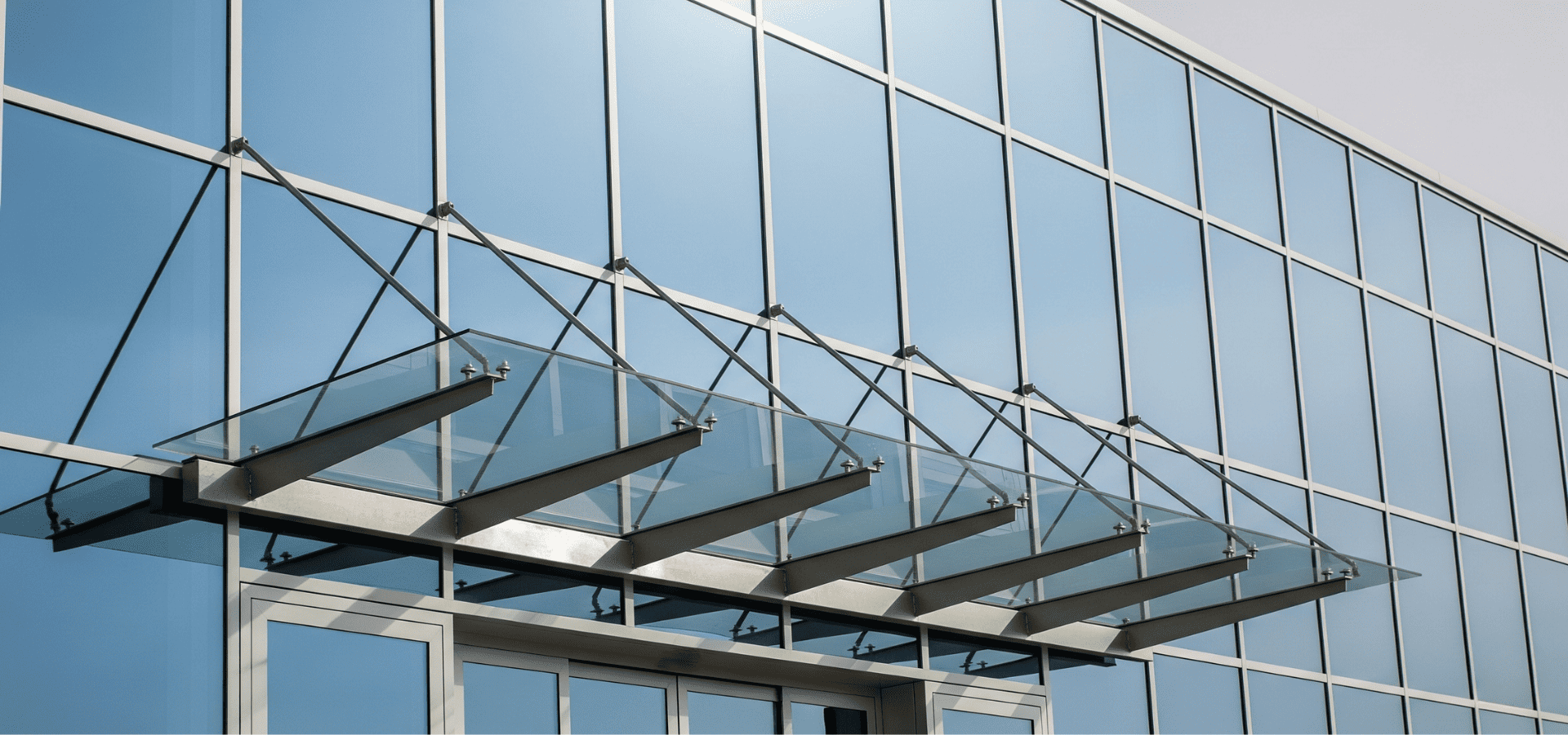
September 17, 2025
Glass curtain walls bring a sleek, ultra-modern look to a building, and you'll often see them in office towers, shopping malls, airports, and so on. The problem is, glass curtain walls aren't the most sturdy structures. That's why unlike regular walls, they're not meant to support the building’s weight in any way. As such, you can't simply drill some holes into them, attach brackets, and expect the glass to bear the weight of the awning. It's also not as simple as just attaching the awning to the metal beams joining the glass panels, because those metal beams are usually too thin to support heavy weight. Installing awnings on glass curtain walls requires a different approach from regular walls, and in this article, we'll be going over the key considerations, as well as exactly how to install awnings onto glass curtain walls. What Are Glass Curtain Walls? For those unclear as to what exactly glass curtain walls are, they’re essentially glass walls, except with one key difference from regular glass walls — they’re sleeker. Regular window glass walls have the glass built into the wall, so the glass is actually an inherent part of the wall. Glass curtain walls, on the other hand, are actually attached onto the building structure, kind of like attaching the skin over the hole in the building. Regular window glass walls use thicker metal beams (mullions) to join the glass panels together, because the glass panels are thicker. The glass panels and the metal beams need to be thicker and more robust because they need to resist wind loads, which can be quite substantial at heights. Glass curtain walls use thinner mullions that make the overall glass facade look sleeker and more seamless. The reason they’re able to function with thinner mullions is that they use high-strength aluminium extrusions, and they’re designed to flex slightly without cracking. These parts are expensive to produce though, so glass curtain walls, while more contemporary-looking, also cost more. Key Considerations Of Awning Installation

September 4, 2025
Awning installation may seem simple at first glance, and some homeowners even DIY the installation, but there's actually a lot going on, which is why proper training and certifications are so important. To the untrained eye, all the installer is doing is attaching the brackets and then securing the awning to the brackets. But consider that to attach the brackets, the installer needs to assess the wall type, calculate whether it can bear the weight of the awning, choose the right fastener, and of course, ensure that everything is secured properly. The awning also needs to comply with Singapore’s awning regulations , or you could end up being fined for improper installation, or even be ordered to remove the awning. It’s also worth noting that most home insurance policies won’t cover awning damage if the awning was installed by an unlicensed contractor. This means that if your awning falls and hurts someone, or causes any other parts of your home to collapse, you won’t have any kind of coverage whatsoever. So whether you’re a homeowner wanting to make sure you’re hiring someone legit, or you’re looking to get into the awning industry, here are the various awning installation trainings and certifications you need to know about. Awning-Specific Training And Certifications There isn’t actually a single nationwide standardised awning installation training programme that all awning installers need to go through. Instead, a good awning contractor typically picks up his or her skills through one or more of the following channels. 1. Apprenticeships
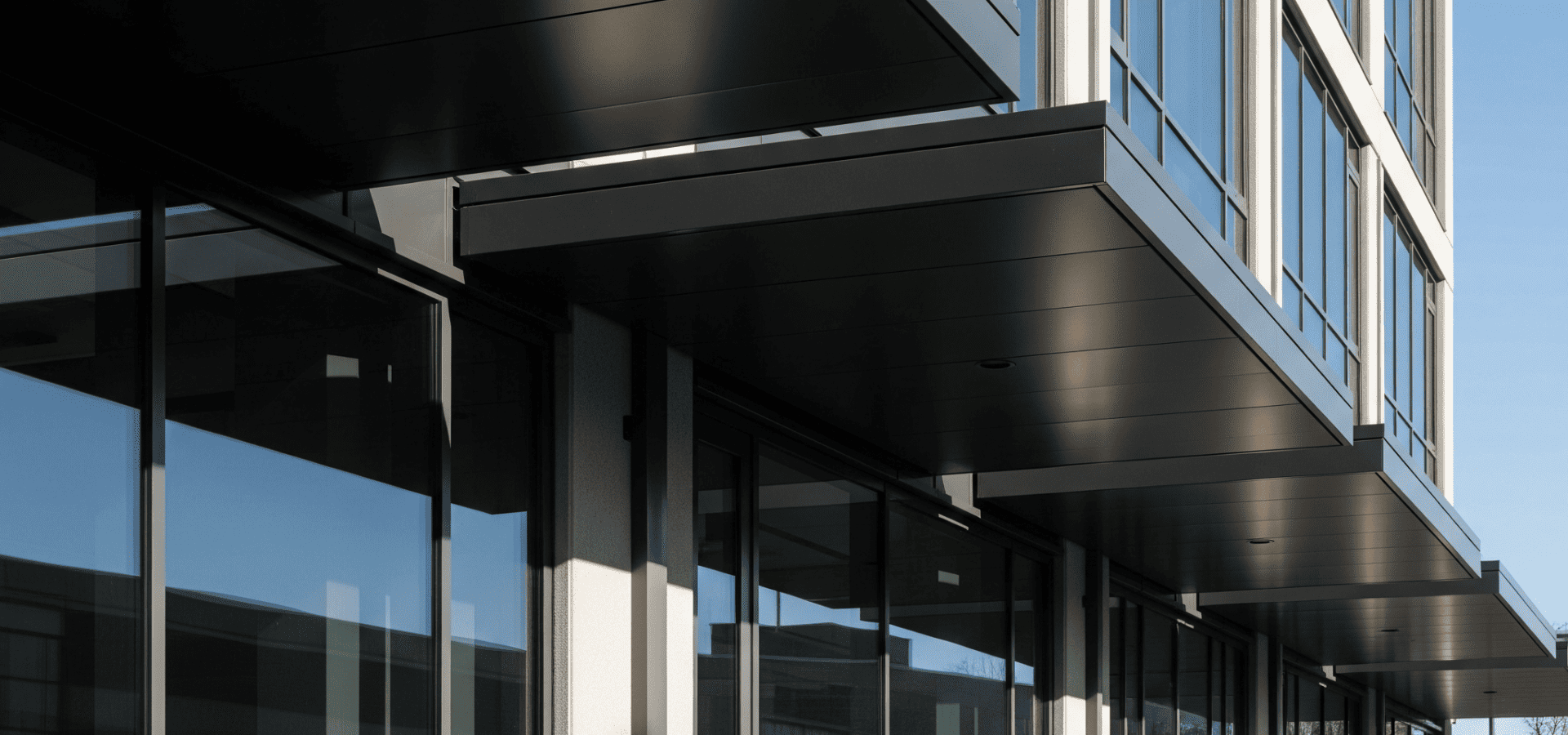
August 28, 2025
Singapore doesn’t play around when it comes to fire safety. And rightly so! We’re a dense, high-rise, urban island with tight neighbourhoods, bustling shophouses, and rooftop patios packed edge-to-edge. There’s not a lot of room for error when something catches fire. That’s why, if you're installing an awning — especially one attached to a commercial unit, an HDB flat, or a landed home near others — fire-rated materials and proper certifications aren’t just a box to tick. They’re part of keeping everyone safe, legal, and protected. But let’s be honest. Between SCDF requirements, BCA codes, “Class 0” ratings, and suppliers promising the moon, it gets real confusing real fast. So we’re cutting through the noise. Here’s what you actually need to know about fire-rated awnings in Singapore. What the certifications mean, when they apply, what kind of awning you need, and how not to get caught out by a dodgy spec sheet. A little research now will avoid the hefty fine (or worse) later. What Is A Fire-Rated Awning? In plain terms. A fire-rated awning is one that’s made with materials tested to withstand or slow the spread of fire. It doesn’t mean it’s fireproof (nothing truly is). It means the materials used — especially the fabric — have been certified to resist ignition, reduce flame spread, and minimise smoke production. These ratings are particularly important for: Awnings on commercial properties (especially eateries or hawker stalls) Canopies near building exits or escape routes Installations on HDB blocks, especially common corridors Any place where cooking, smoking, or potential heat sources are nearby And in a tightly packed urban space like Singapore, even a small flame can escalate quickly. Fire-rated fabrics give you that extra buffer. They’re designed not to add fuel to the fire… literally. What Kind of Materials Make a Fire-Rated Awning “Fire-Rated”?
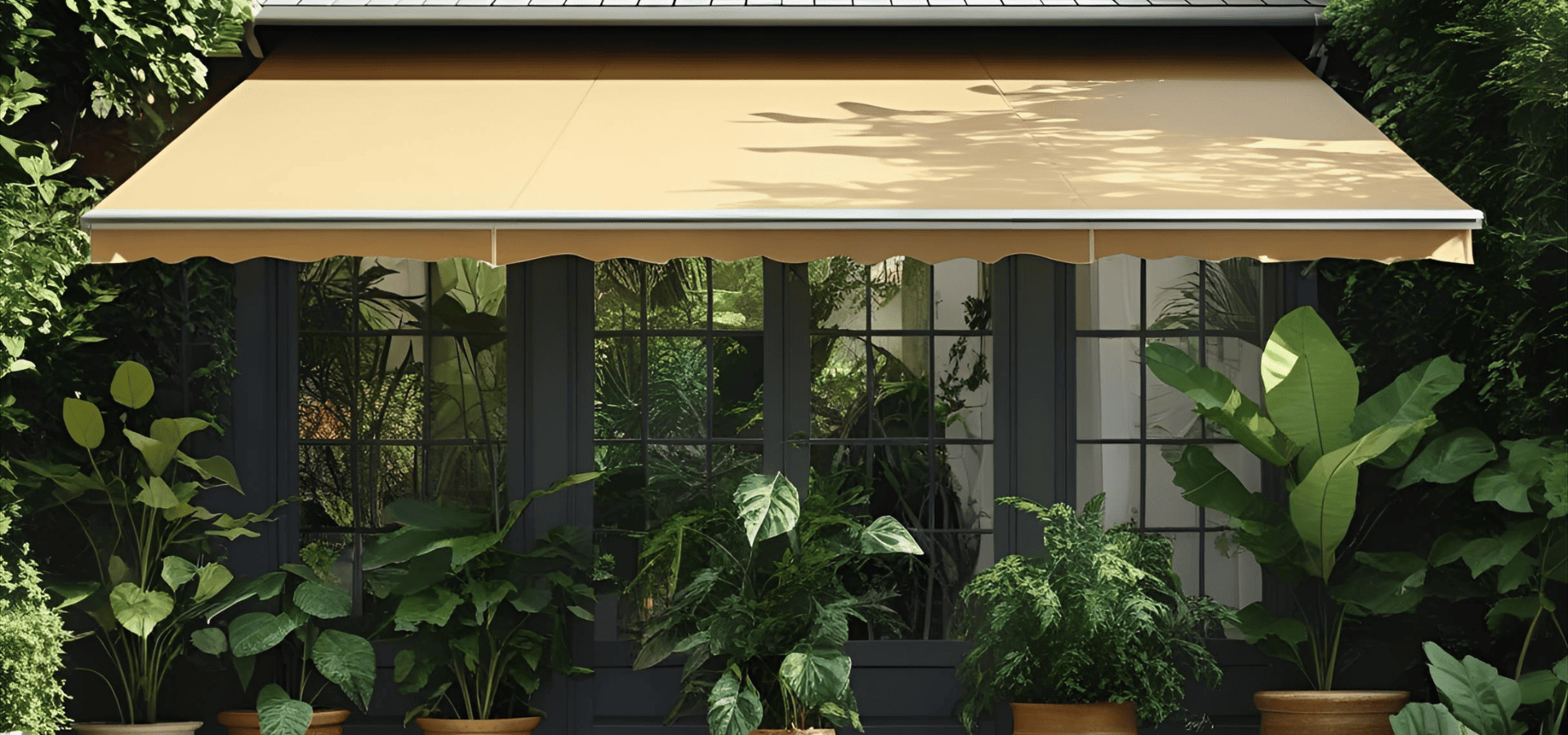
August 21, 2025
There’s something quietly magical about a greenhouse at dawn. Soft, golden light filtering through the glazing, warming the air with slow intention — the whole space exhales, and the plants perk up. But give it a few hours, and that calm can turn to chaos: blistering heat, scorched leaves, stalled growth. The irony is that the same sunlight that plants need to thrive is often what ends up stressing them out the most. That’s where shade awnings come in. (And no, they’re not just for patios.) In greenhouses and outdoor grow zones, a well-chosen awning is one of the most effective tools for keeping your cultivation space balanced. A well-positioned awning doesn’t just block sunlight: it shapes it. It diffuses it. It gives you a level of control that cracked windows and makeshift curtains can’t compete with. This guide unpacks the value of shade awnings for greenhouse growers. We’re covering what they do, what kinds are out there, and how to choose the right setup based on your crops, your climate, and the kind of control you want. Your plant-babies only deserve the best. The Problem With Full Sun (Even For Sun-Loving Plants) Most plants evolved to grow in open air — not sealed boxes of magnified heat. The greenhouse effect isn’t just a metaphor here. It’s real, and it amplifies everything: sunlight, radiant heat, humidity swings. It’s lovely in winter, but it's brutal in summer. You’ll see the signs. Leaves bleach and curl. Flowers drop too early. Soil dries out faster than you can water. Some plants stall their growth entirely, while others just throw in the towel. And this gets even worse if you’re working with seedlings, cuttings, or shade-lovers. The stress will kill your flora. A retractable or adjustable shading system gives you back the reins and the power to protect your plants. It helps you stay ahead of heat spikes, fine-tune your light levels, and protect delicate crops when they’re most vulnerable. Especially in places like Singapore — where blazing sun and sudden downpours can swap places in minutes — having that kind of agility makes all the difference. Shade Isn’t About Darkness — It’s About Balance

August 13, 2025
Once the awning is installed, most people usually just leave it as it is, because they assume that their awning is more than enough to keep the sun and rain out. And that’s true to a large extent. However, if you don’t coat your awning with the necessary protective coatings, it’ll quickly wear out or discolour, and you might have to perform frequent repairs or even replacements. This is especially so in Singapore’s environments, where harsh, glaring UV rays attack your awning relentlessly 365 days a year. The good news is, all it takes to extend your awning’s lifespan and reduce the amount of repairs that you’ll need to do is to apply coatings that shield it from these harsh weather elements. These coatings will also prevent colour fading and keep mould and mildew away. Sounds good? Then let’s dive right into the coatings that are available on the market for protecting your awning. Waterproof Coatings Waterproof coatings are, as you can probably guess, coatings that make your awning waterproof . This may come as a surprise to some, but many fabric awnings are actually not waterproof — they’re merely water-resistant. Water-resistant awnings do repel water and keep it flowing off your awning, but during prolonged periods of heavy rain, rainwater will eventually get past the water-resistant layer and be absorbed by your fabric. In more severe cases, water may even seep through the fabric. Even taking aside the fact that you obviously don’t want water dripping onto you while you’re under the awning, water absorption is harmful to your fabric awning. When water gets into fabric, your fabric swells, and then when it dries, it shrinks again. This process causes issues like permanent shrinking, tightness at the seams, and in the worst cases, ripping at the seams due to the tightness. On top of that, where there’s trapped water, there’s always the risk of mould and mildew, which can cause permanent stains and damage (and they’re just nasty). So to minimise the risk of water-related damage to your awning and prolong its longevity, you need to waterproof it so that no water reaches the fabric. Here are your options. 1. Petroleum-Based Coatings Petroleum-based waterproof coatings provide reliable waterproofing while maintaining the flexibility of your awning. These are usually the most affordable option for those looking for robust waterproofing for their fabric awnings. The catch is that they’re also higher in VOCs and are less durable, so they’ll wear out quicker as compared to the other options. They also don’t provide much protection against UV rays, which means your awning can still fade or discolour from UV ray exposure. Still, if you’re looking for the most affordable waterproofing option upfront, there’s no cheaper option than petroleum-based coatings. 2. High-Quality Acrylic Formulations
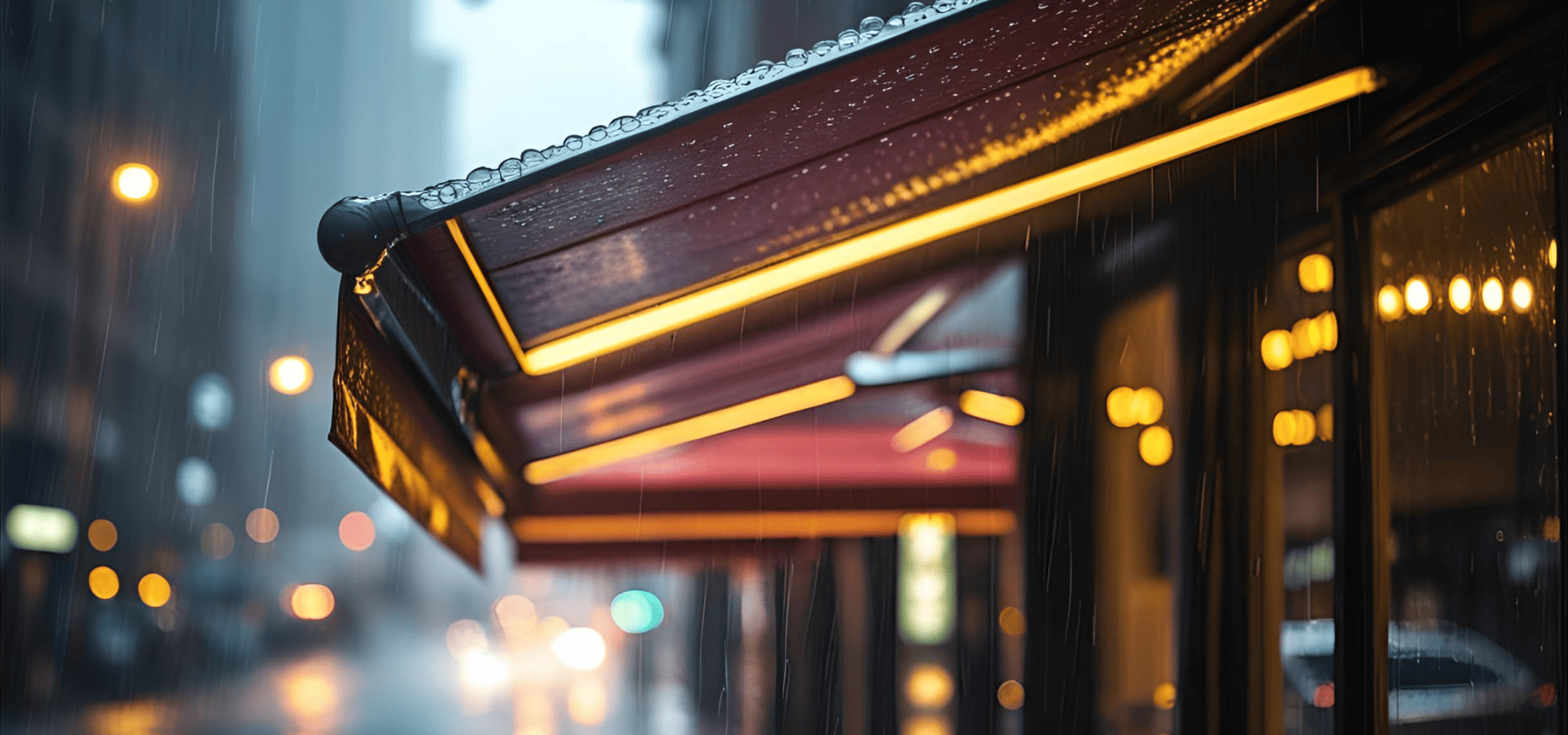
August 7, 2025
Your awning protects you, come rain or shine, but what protects your awning? Your awning stands alone against the relentless sun and heavy storms, keeping you sheltered come what may, so… don’t you feel a little guilty not doing anything for it? Jokes aside, in order for your awning to do its job, you need to equip it with the necessary tools, and in this case, that means waterproof coating. But first, let’s clear up a common misconception. Many people actually believe that all fabric awnings are waterproof, because they don’t see water seeping through during rain. But in reality, many fabric awnings are merely water-resistant, not waterproof. The reason why rain doesn’t seep through is because of the water-resistant coating that repels rain. As long as it’s sloped and allows water to keep flowing off, this water-resistant coating is usually enough for water to not penetrate the water-resistant fabric. The problem is, during extended periods of heavy rain, water will slowly start to get past the water-resistant coating. It’s not waterproof, only water-resistant, so given enough rain, water will get through this coating and the fabric will absorb this moisture, or even start dripping water. People just don’t realise this happens because long, extended periods of heavy rain are rare in Singapore, and when they do come, most people will eventually head indoors. Seldom do people stay outdoors long enough that they start to see water seeping through, and many homeowners also retract their awning during storms. But even if you don’t need your awning to be completely waterproof to shelter you, it’s still a good idea to waterproof it. If not, each time it rains, water will work its way into your fabric awning, causing your fabric to stretch and shrink with these moisture level changes. This wears out your awning quicker over time, and also increases the likelihood of mould and mildew forming. That’s why waterproofing isn’t just essential for shelter against the rain — it’s a vital step to preserve the longevity of your fabric awning. But wait! Before you begin waterproofing your awning, you need to make sure that your awning actually needs that waterproofing. What we mean by this is that certain fabrics are already waterproof, so don’t do double work and apply another layer of waterproofing. To ensure you know whether or not you need to waterproof your fabric awning, we’ll be starting with a section breaking down which awning materials need waterproofing, and which ones don’t. Let’s begin! Which Fabric Awning Materials Need Waterproofing?
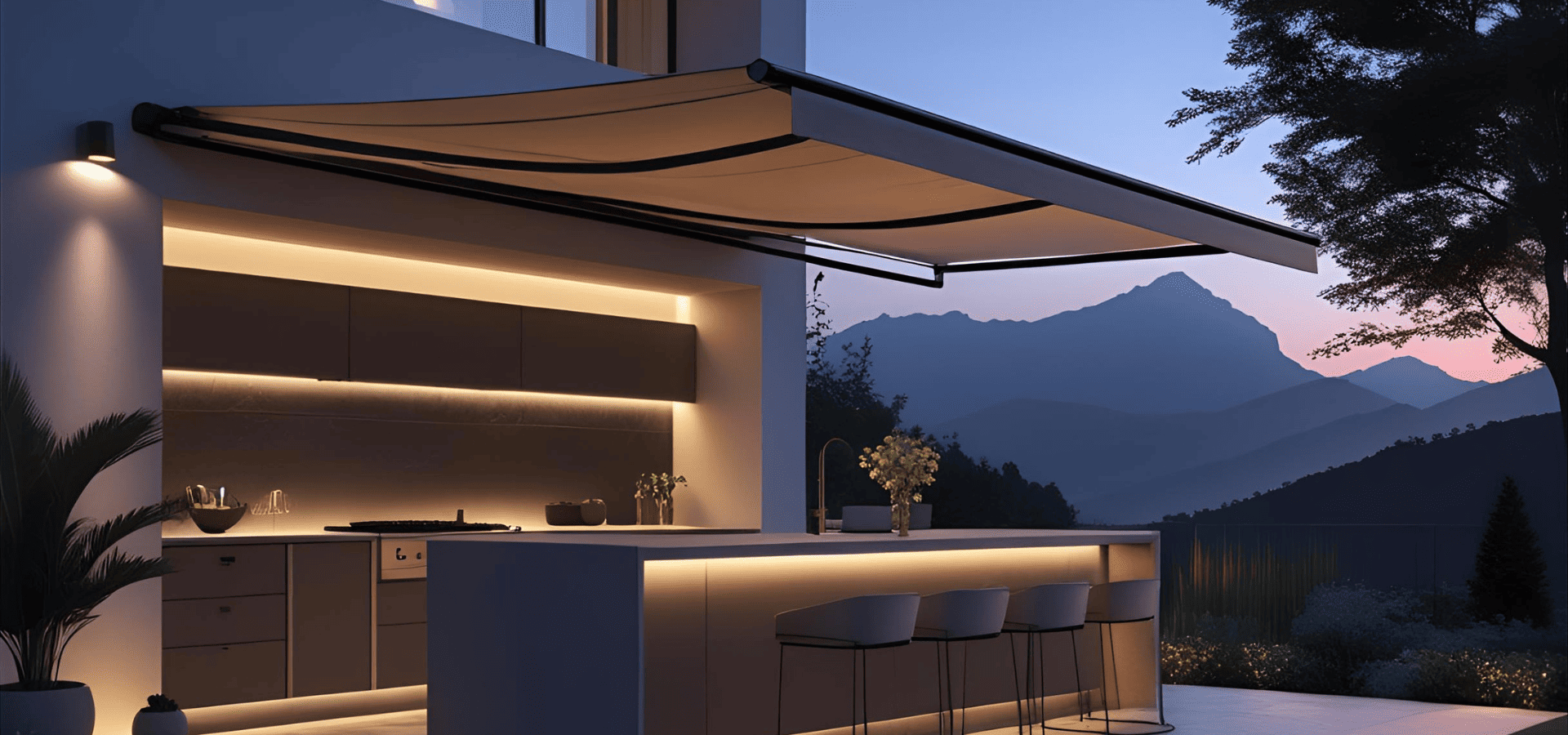
July 31, 2025
There’s something deeply satisfying about an outdoor kitchen that actually works. And we’re not just talking one that looks the part… We’re talking one that handles the hustle. Searing steaks under open skies… Pouring drinks beneath string lights… Hosting dinner without scanning the clouds every five minutes… If you want the lifestyle, the bottom line is that you have to invest in it. Because for all that promise and curb-appeal glory, one thing that separates a truly usable space from a short-season novelty is the shelter. Not the collapsible kind that wilts in the wind or sours after a week of rain. We’re talking real, integrated shade — sharp enough to handle heat, rain, and breeze, while still being subtle enough to lift the whole setup. Awnings are precisely that investment. Done right, they don’t just block sun: they shape your space. They expand your comfort zone, stretch your season, and keep the BBQ vibes alive even when the weather’s picking a fight. So let’s explore how to invest in an awning the right way. Do You Really Need An Outdoor Awning? Outdoor kitchens are all about extending the indoors outside. You’re turning open-air into something just as liveable, practical, and comfortable as the space inside. But the second you take off the roof, you’re inviting in the elements, and rain doesn’t RSVP to your neighborhood BBQ. Awnings resolve this tension. They bring overhead coverage without boxing you in. Unlike pergolas or permanent structures, they adapt — retracting when you want the light, rolling out when you need the cover. However, unlike less impressive solutions such as umbrellas or pop-ups, they’re also built to last. Proper awnings are anchored, engineered for wind, and ready for years of sun and storm. But invisibly, they also do something quieter: they define the space. A thoughtfully placed awning says, “This is the kitchen.” Or, “This is where you sip chardonnay while I char the brinjal.” It’s architectural punctuation — the line between lounging and grilling. The subtext between background chatter and BBQ mastery where a memorable gathering exists. Fixed vs Retractable Awnings
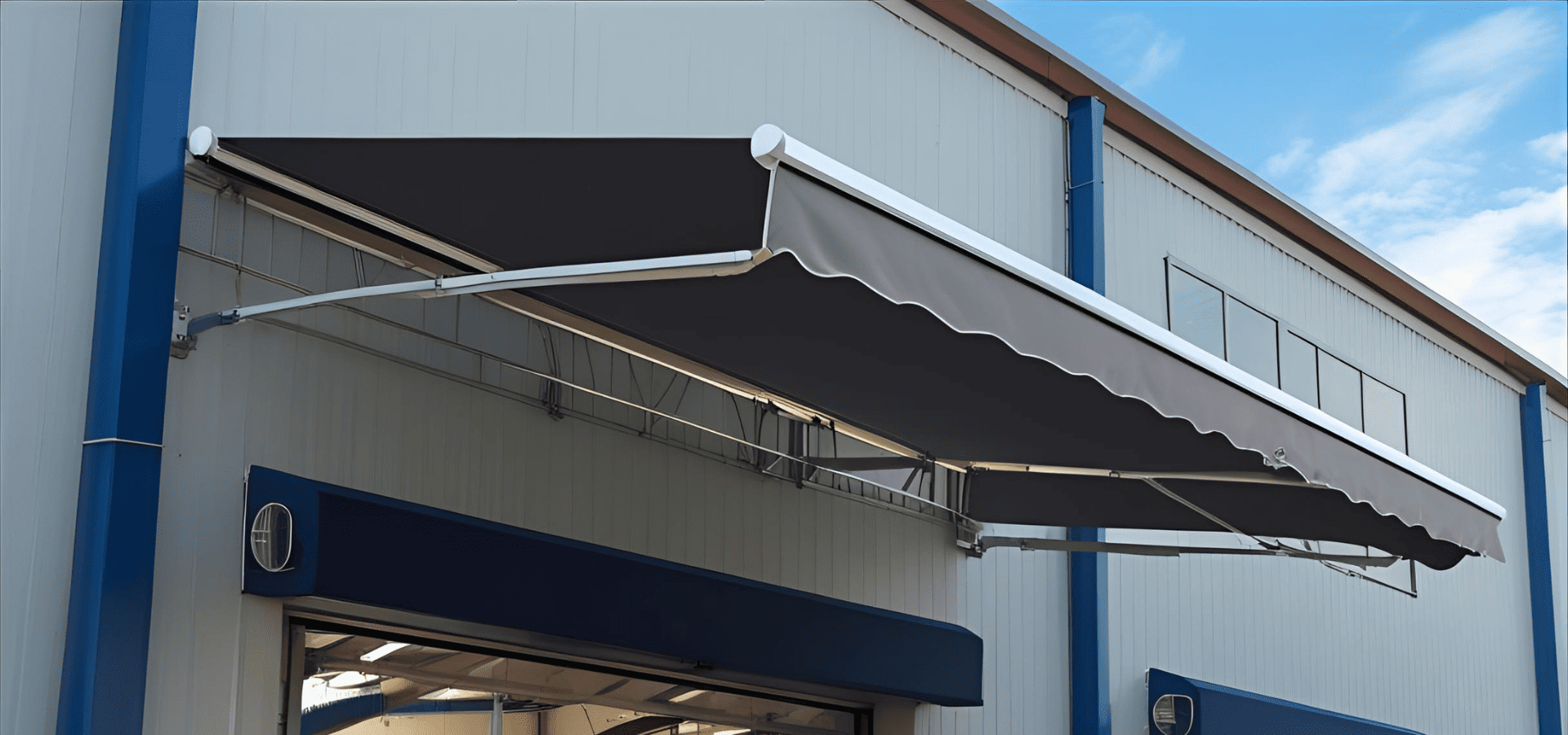
July 24, 2025
There’s something deeply underrated about a good industrial awning. It’s not flashy. It’s not sexy. It won’t be the installation that has your customers quietly sighing in awe… …but it might just be the one that has them respecting your pragmatism. Eye-candy aside, industrial awnings are one of those non-negotiable workhorse installations that transform a business’s platform. They’re no-nonsense, sure, but they also significantly improve how a business looks, functions, and saves money — all without demanding a round of applause. However, as with all substance-over-style selections, it’s crucial you know exactly what your space needs before you go committing to any upgrades. So this guide walks through everything you actually need to know about industrial awnings. From types and materials to design choices, red tape, and what to avoid unless you like wasting money, it’s all in here! Whether you’re shading a loading dock, sheltering a storefront, or keeping staff and customers dry on a rainy Tuesday, you might not always notice a big protective awning… But you always notice a lack of one. What Counts As An “Industrial” Awning? Before we dive into brackets and fabric grades, let’s get one thing clear: industrial awnings aren’t just oversized versions of the ones you’d hang over a deck. They’re designed for durability, weather resistance, and long-haul performance in commercial or high-traffic settings. You’ll often find them mounted in premises such as factories, retail centres, warehouses, cafés, distribution hubs, and vehicle bays. These are the places where people, goods, and equipment tend to cohabitate. Put simply, if it’s an area zoned for commercial or business purposes, it’s probably got an industrial awning. Industrial awnings can usually be identified by their: Larger spans or custom sizings Stronger structural materials (usually steel or aluminium) Higher load tolerances (for wind, rain, snow, or debris) And stricter compliance with commercial codes and planning regulations But “industrial” doesn’t always have to mean clunky or oversized. Plenty of these awnings are clean and discreet. The type you get all depends on what you need it for. Why Businesses Invest In Awnings (Spoiler: it’s not just about shade!) Let’s clear this up: an awning isn’t just there to keep pallets dry or staff from squinting in the sun. Awnings, and industrial awnings in particular, have a huge array of use cases. And when done right they deliver serious value! Energy Efficiency
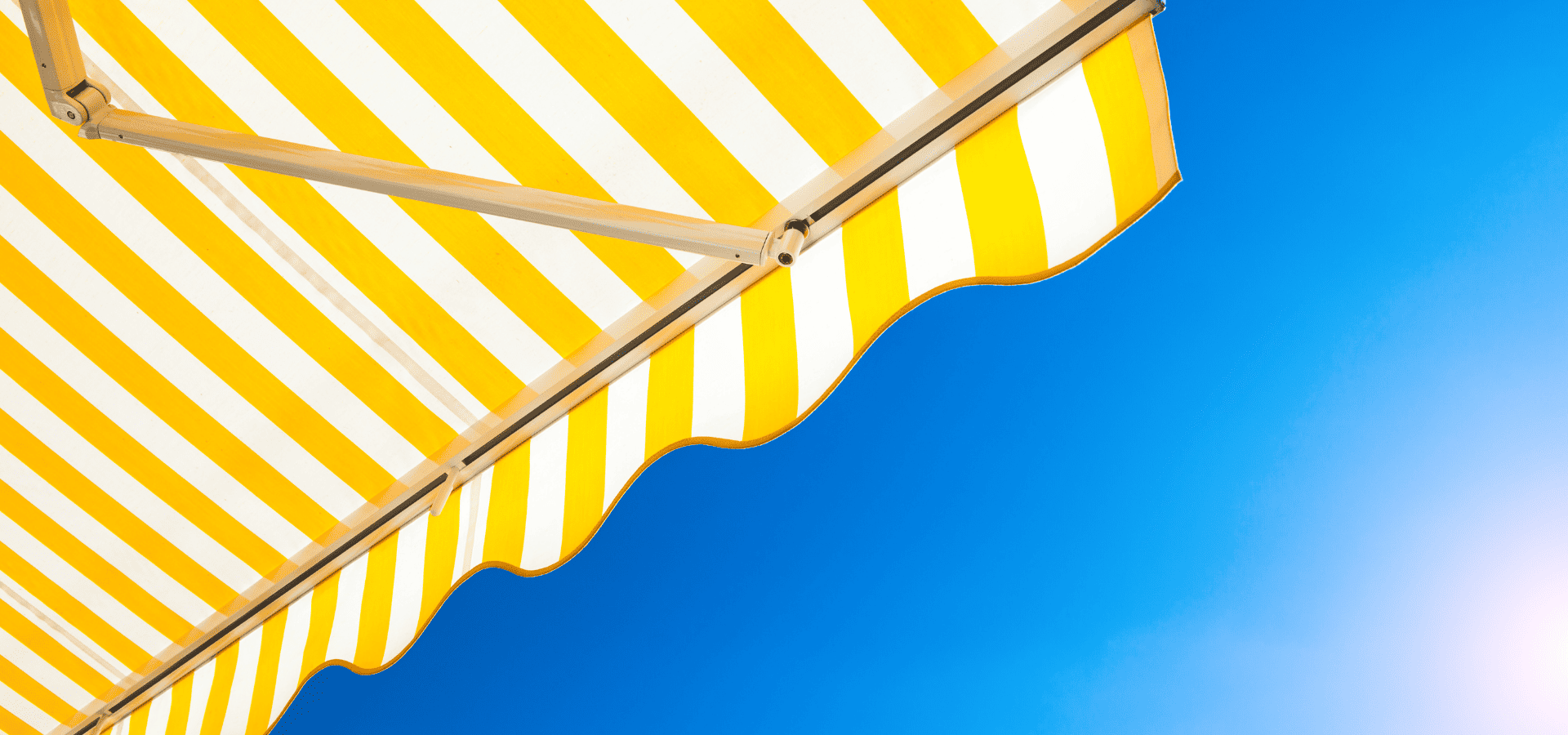
July 17, 2025
Singapore is near the equator, so as all Singaporeans would know, the sun shines relentlessly every day of the year. There’s no winter, no autumn, and no spring, just summer all year round. This means we never have to worry about freezing cold, but it also means there’s no relief from the glaring sun, no matter which day of the year it is, unless it happens to rain on that particular day. One way to deal with this is by applying sunscreen to protect your skin from harmful UV rays. But even then, prolonged exposure is still harmful, accelerating skin aging and causing wrinkles and sagging. And while you can protect yourself to a certain degree, what about your furnishings? Over time, UV rays cause your sofa, flooring, and wood finishes to fade, and there’s no sunscreen that you can just spray over them. Even putting all these aside, sunlight adds to the sweltering heat, raising your indoor temperatures and increasing your cooling bills. Taking all these into account, an awning is a smart investment to prolong the longevity of your skin and your indoor furnishings while also helping you save on cooling bills. Not just any awning will do though. Specifically, you’ll want high-quality retractable awnings that can effectively keep UV rays out. It’s a common misconception that fabrics block all UV rays because your naked eye doesn’t see any rays passing through. However, in reality, lower-quality, untreated fabrics won’t offer much in the way of UV protection, and the rays will still pass through, reaching you and your furnishings. Now, you’re probably wondering why we recommend retractable awnings instead of fixed awnings, and that’s a pretty valid question. Here’s why. Why Opt For Retractable Awnings?
